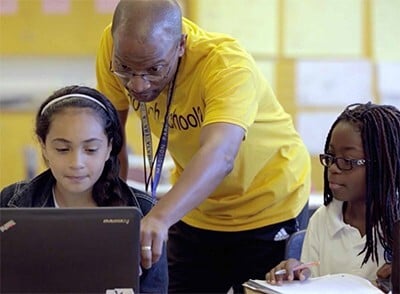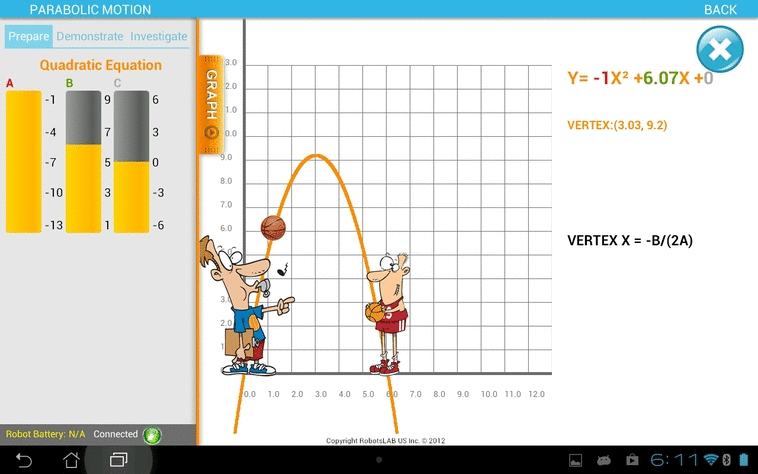Rural Vermont school embraces edtech
I’ve never thought of Vermont as “poor and rural” inspite of the image I had of it as nothing but forests and maple syrup farms--or whatever they call them ... maple groves, maybe? So I was surprised to read about one school superintendent’s difficulty in upgrading the public schools in his district: Ned Kirsch, superintendent at Franklin West Supervisory Union (FWSU) in the small town of Georgia, Vt., population 4300.
He says that upon his arrival in Georgia, he was pleased with the schools that he found. The problems in the schools were not with the “hard-working teachers, committed administrators, and 2,000 excited students;” instead, those excited students needed a connection to the technological world outside Northern Vermont.
- 1 Comments
- Aug 1, 2014 12:00:00 PM
- Posted by Mike Nardine
- Topics: EdTech, Education, 21st Century Classroom
Gamification can improve learning speed and retention
This book, Playing to Win: Gamification and Serious Games in Organizational Learning by ASTD Research, claims to be the result of rigorous research into the value of gamification as an aid to learning. Gamification, for those of you for whom the word isn’t instantly definable, is the use of games in a non-game context to engage and encourage users to solve problems. It's a new paradigm in learning made more possible by recent technological advancements.
The book’s author, ASTD Research, is introduced by Wikipedia as “The Association for Talent Development (ATD), formerly American Society for Training & Development (ASTD)... a non-profit association for workplace learning and performance professionals.” It was formed in 1944. On its website ASTD claims the following for its research: “... an empirical foundation for today's data-driven decision-makers, containing both quantitative and qualitative analysis about organizational learning, human capital management, training, and performance.”
- 0 Comments
- Jul 31, 2014 12:00:00 PM
- Posted by Mike Nardine
- Topics: 21st Century Classroom
california schools embrace blended classrooms

Oakland CA schools have a problem trying to teach their academically diverse student body. Kilian Betlach, the principal of Oakland’s Elmhurst Community Prep says that while one third of Elmhurst’s kids are at grade level in reading and math, the remaining two thirds are from one to four years behind. No doubt Principal Betlach’s school shares the same problem with many inner-city, high-poverty middle schools.
The question of how best to address this problem is complicated by lack of staff and lack of funds -- another common problem with inner-city schools. With too few teachers, how can they keep the slower learners from falling farther behind without denying faster learners the time they deserve and thereby cheating them all of a decent education? Unfortunately the answer to this problem is not to be found in the old factory model of education most of us grew up with.
- 0 Comments
- Jul 30, 2014 12:00:00 PM
- Posted by Mike Nardine
- Topics: Education Politics, 21st Century Classroom
Summer slide achievement gap vacation
This shouldn't come as a surprise, but after three months off in the summer most kids return in September at a lower learning level than when they departed: A whole month behind, according to Catherine Augustine a senior policy researcher at the RAND Corporation who has studied summer learning loss. Apparently a majority of children come back behind in math, whereas fewer are left behind in reading. This step backward is most obvious with children in low income neighborhoods where they might have less access to libraries and books in the home.
Over the years educators have promoted various changes in the educational system they thought might go a long way toward cutting back this deficit. School year-round was one idea; a marginally longer school year was another. The year-round idea apparently wasn’t anywhere near as effective as its proponents had hoped: studies still showed a deficit of one month or so at the beginning of the next year. It didn’t make much sense fiscally, and it surely ruined a lot of family summer vacations. Extending the school year made better financial sense but didn’t work all that well in some countries that had tried it, and Canadian schools showed better than the U.S. on the tests while only holding the kids in for three more days during the year.
- 0 Comments
- Jul 29, 2014 12:00:00 PM
- Posted by Charles Nimrad
- Topics: Education, 21st Century Classroom
looking for ways to interest kids in tech? 3D print their ice cream!
We’ve all heard the old saw “the quickest way to a man’s heart is through his stomach.” I can’t say I put much stock in that one, but I’ve heard that the “quickest way to get a kid’s interest is with an ice cream cone” -- I believe that one based on my own experience an impossibly long time ago.
Therefore it didn’t surprise me at all to hear that the fine institution of the Massachusetts Institute of Technology was experimenting with producing ice cream with a 3D printer in hope of drawing kids' interest to the technology. It apparently started one semester when Professor John Hart’s class in additive manufacturing printed 600 ice cream spoons. Additive manufacturing, by the way, is considered by many including President Obama to be the new revolution in manufacturing. Instead of forming things in molds or by punching, pressing and whittling them down on tool and die machines, additive manufacturing builds things up nature's way, one layer at a time.
- 0 Comments
- Jul 28, 2014 3:35:00 PM
- Posted by Mike Nardine
- Topics: 21st Century Classroom
RobotsLAB is a winner of the Kaplan EdTech Accelerator powered by TechStars
Kaplan, Inc., the global education company and largest subsidiary of the Graham Holdings Company (NYSE: GHC), and Techstars, the global startup accelerator, announced today the 12 education-technology startups selected to participate in the Kaplan EdTech Accelerator, powered by Techstars, their three-month immersive mentorship and business development program beginning today in New York City.

- 0 Comments
- Jul 24, 2014 11:36:33 AM
- Posted by Elad Inbar
- Topics: Awards, 21st Century Classroom
Profesional Development Tips

When computers first burst into the classroom back in the late eighties and nineties, most teachers were nonplussed by a new technology they had hardly been aware of, much less trained for. They stared at these new machines and wondered what were they supposed to do with them. A lifetime of teaching couldn’t provide them with a clue and what they were hearing from their administrators only added to the confusion. As a result some retired rather than deal with the newfangled things and some simply set them on their desks and ignored them.
The majority, thankfully, buckled down and decided to find out how these things worked and how they could be made to serve their students. Of course one of the first things they discovered was that the students either already knew how to use the darn things or were capable of learning to use them faster than their teachers … and teachers are still playing catch up with their students with each new technological arrival.
- 0 Comments
- Jul 17, 2014 2:00:00 PM
- Posted by Charles Nimrad
- Topics: EdTech, Education, 21st Century Classroom
- Posted by Anna Sandler
- Topics: Awards, 21st Century Classroom
What makes a parabola relevant to kids?

Conveying to kids the idea that math plays an important part in their lives is, as any math teacher can tell you, one of the most difficult things about teaching math. The blackboard, the book and rote memorization were for years the only tools math teachers had; that, and the hope that they were getting it across. As most of us are aware, for the great majority of kids over the years it wasn’t enough.
- 0 Comments
- Jul 16, 2014 12:00:00 PM
- Posted by Anna Sandler
- Topics: Math, EdTech, 21st Century Classroom
profesional development for technology use

In an earlier post (Professional Development Tips) we discussed professional development courses for teachers as presented by noted educational consultant Tom Daccord of learning consultancy EdTech Teacher. Mr Daccord offered six tips that he believed would improve teacher professional development courses leading, of course, to improved teacher classroom effectiveness.
One point he made that we found particularly arresting was his insistence that it was no longer necessary or even wise for teachers to attempt to understand the “nuts and bolts of technology” when dealing with new tech teaching aids. Learning how to operate the new technology, something that students seemed to be able to do almost instinctively, was not as important as having a plan that would insure that these new tools were applied effectively in the classroom. Good pedagogy was to be preferred over technical proficiency. What adult, after all, can move his thumbs as fast as a teenager?
- 0 Comments
- Jul 15, 2014 4:39:16 PM
- Posted by Charles Nimrad
- Topics: EdTech, 21st Century Classroom
Relevant Posts
Popular Posts
Subscribe to Email Updates
-
I Want To Learn MoreADDITIONAL INFORMATION


